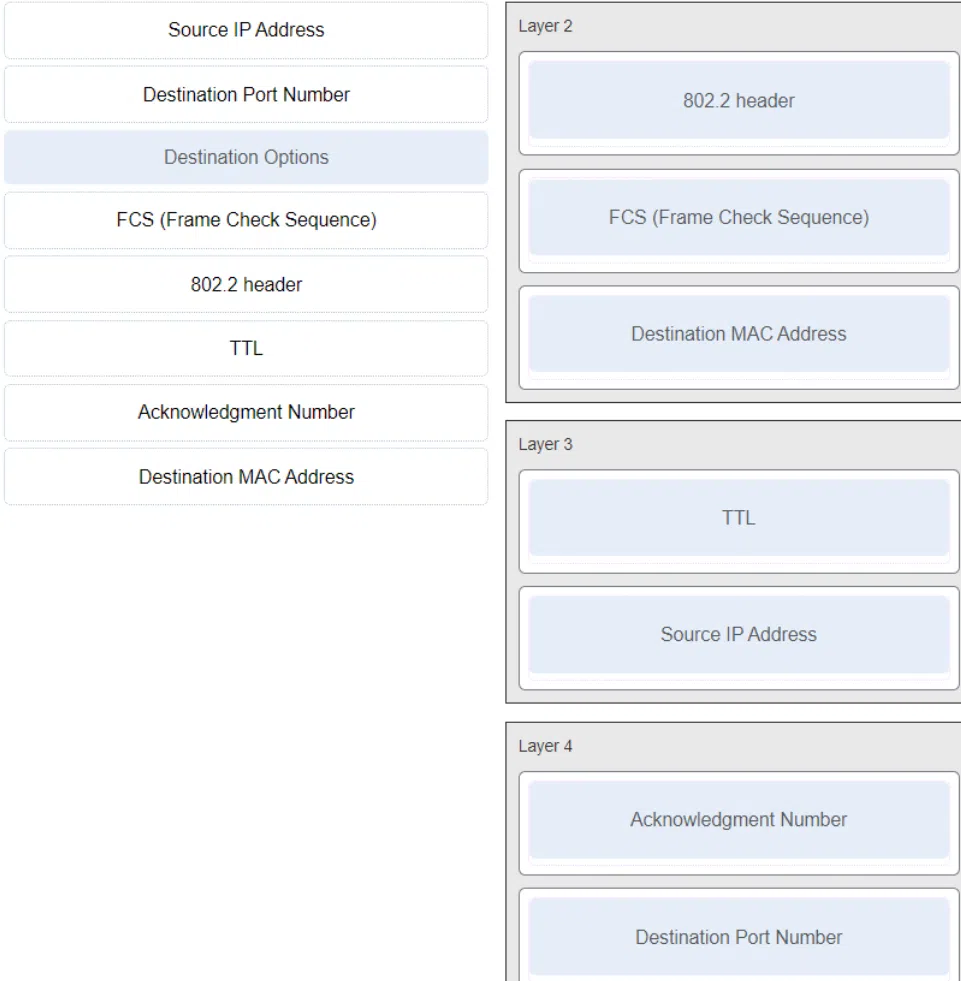| Explanation & Hint:
In the OSI model, different layers have specific functions and responsibilities, and certain fields in network protocol headers are associated with these layers:
Layer 2: Data Link Layer
- 802.2 header: This refers to the IEEE 802.2 standard for logical link control (LLC) which is part of the Data Link Layer. It provides addressing and control of the data link. It encapsulates the network layer protocol information.
- FCS (Frame Check Sequence): The FCS is used for error detection. It’s a part of the trailer in the Ethernet frame, which is a Layer 2 PDU (Protocol Data Unit). It allows the receiving node to detect if the frame was damaged in transit.
- Destination MAC Address: The MAC address is a hardware address that identifies each device on a local network uniquely. It is used by switches to forward frames to the correct destination on a local network, which is a Layer 2 activity.
Layer 3: Network Layer
- TTL (Time To Live): The TTL field in an IP packet header helps prevent datagrams from looping indefinitely on an IP network. Each router that forwards a packet decrements the TTL by one. If the TTL reaches zero, the packet is discarded. This is a Layer 3 function because it deals with the lifespan of a packet as it travels across networks.
- Source IP Address: This is the IP address of the device that originally sends the packet. The Network Layer (Layer 3) is responsible for the logical IP addressing and for routing packets across different networks.
Layer 4: Transport Layer
- Acknowledgment Number: In TCP (Transmission Control Protocol), which operates at Layer 4, the acknowledgment number is used to confirm receipt of packets. TCP is a connection-oriented protocol, and the acknowledgment number is a key feature that supports reliable transmission.
- Destination Port Number: The port number is used to identify specific applications/services on a host. For example, web servers usually use port 80 for HTTP. This is managed by the Transport Layer (Layer 4), which is responsible for end-to-end communication and reliability.
These fields are integral to the operation of their respective layers, ensuring that data is encapsulated, routed, and received accurately and reliably. |
